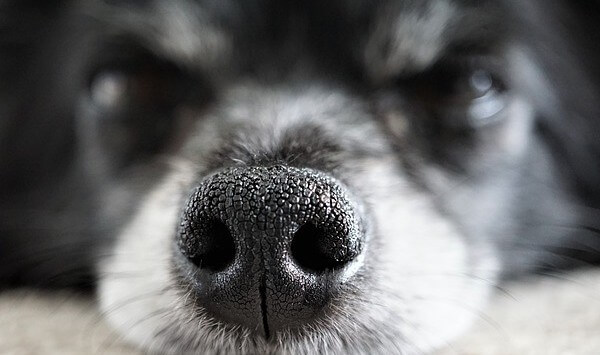
You’ve probably heard of Blue Chihuahuas or really want this uniquely colored small dog. Before you head out and buy a Blue Chihuahua, you’ll want to read through this article. We’ve provided many interesting facts about this rare dog breed you don’t want to miss. We hope that the information below will help you decide whether Blue Chihuahua is right for you.
Before we dive into the article, we want to point out that Blue Chihuahuas do come in various different colors. There are Blue Chihuahuas with two colors, tri-colored and even patterns. A solid Blue Chihuahua is extremely rare.
We’ll cover everything you need to know about the Blue Chihuahua breed. Alright, let’s get right to it!
Table of Contents
Blue Chihuahua
You’re probably intrigued by the idea of having a Blue Chihuahua because it is such a unique color in the Chihuahua dog breed. If you’ve never seen a Blue Chihuahua before or don’t know much about the Blue Chihuahua, here it is.
What is a Blue Chihuahua?

First, a Blue Chihuahua isn’t really blue! The color blue in a Blue Chihuahua is misleading because Blue Chihuahuas actually have a distinct dull grey and silver coat color with a slight blue color under direct sunlight.
The Blue in Blue Chihuahua also refers to the pigmentation of the skin and does not refer to the coat color. For instance, a Blue Chihuahua will have dark eye rims, nose, lips, and paw pads that look black. However, under the direct sunlight, you can see that the color is actually bluish navy tint and not black.
Every once in a while you may be able to spot a Blue Chihuahua, but it’s not every day that you’ll see one. That’s because Blue Chihuahuas are extremely rare. The gene that creates the dull grey and silver coat color is not only rare but also a recessive gene.
A Blue Chihuahua can be either a deer head Chihuahua or an apple head Chihuahua. The chances that there is a Blue Chihuahua in a litter of puppies are rare. It can occur if the Chihuahua breeder breeds a black and tan Chihuahua with a chocolate Chihuahua or even a fawn Chihuahua together. To have a Blue Chihuahua, one or both Chihuahua parents must have the recessive blue gene.
Most Blue Chihuahuas are either blue parti-colored or tri-colored. Parti-colored is when the Blue Chihuahua has a combination of two colors. Tri-colored Blue Chihuahuas have a combination of three colors.
Some Blue Chihuahuas also have merle markings. Blue Chihuahuas with merle markings have a blue or black splashed pattern on their coat. As you can see, it’s actually very rare to find a solid blue Blue Chihuahua.
A Blue Chihuahua can also have a long coat or a short coat.
Blue Chihuahua common health problems
Many veterinarians advised that Chihuahua breeders should not breed their female Blue Chihuahuas with male Blue Chihuahuas because the blue coat color is linked to health issues.
This is another reason why Blue Chihuahuas are rare. According to The Chihuahua Club of America, the coat color of the Chihuahuas can tell you a lot about their health and what health problems they are susceptible to.
Certain coat colors in Chihuahua have been linked to genes with birth defects or traits that are undesirable. For example, Blue Chihuahuas with blue coat color or merle markings will often have the following health issues:
Tracheal collapse in Blue Chihuahua puppy and dog
Chihuahuas, in general, are prone to tracheal collapse. If your Blue Chihuahua is having a difficult time breathing or is coughing or gagging, it’s best to bring him or her to the vet right away. It could be a sign that your pooch has tracheal collapse. It’s also difficult to see our small precious pup trying to gasp for air and having seizures as a result of this condition.
It’s important to keep in mind that Blue Chihuahuas are more susceptible to health problems that affect regular Chihuahua.
Patellar luxation or knee and kneecap problems in Blue Chihuahua
Unfortunately, Chihuahuas are also prone to knee problems. Patellar luxation is a common health problem found in Chihuahuas. If a Blue Chihuahua has patellar luxation, it can affect the way he or she walks as well as his or her gait. Surgery is required to fix this health.
A dog can have knee problems in one of two ways. The first is through genetics and the second is due to injury. If a Blue Chihuahua puppy has patellar luxation at a young age, then it is likely due to its genetics. Patellar luxation can also be caused by injury from jumping too much or by putting a lot of stress and pressure on the patella.
Here are some signs and symptoms of Patellar Luxation in a Blue Chihuahua:
- The Blue Chihuahua will try to hold up his or her hind limb.
- Lameness in the hind limb (can be gradual or sudden).
- Blue Chihuahuas start to skip occasionally in order to avoid putting pressure on the kneecap.
- Gait abnormality due to unusual hind limb movement.
If you notice these symptoms in your Blue Chihuahua, be sure to bring him to the vet right away.
Handy Tip: When your Chihuahua is in pain from Patellar luxation or from other health problems, it’s best that you do not let strangers touch him. Chihuahuas may bite as a way to cope with the pain or bite to try to relieve some of that pain. If a stranger is handling him, he may be on guard and try to bite in order to defend himself.
The vet will perform a series of tests to confirm that your Blue Chihuahua has Patellar luxation including:
- Urine analysis.
- Blood tests.
- X-rays of the hind limbs.
- Synovial fluid analysis to find out the amount of fluid between knee joints.
- Knee examination when your Chihuahua is under sedation.
Since Blue Chihuahuas are rare with potential defective genes, they become more susceptible to patellar luxation.
Dry eyes or Kerato-Conjunctivitis Sicca in Chihuahuas
If you have a Chihuahua, you know that they have eyes that protrude out more than other dog breeds. Since their eyes protrude out, one or both eyes are prone to being dry. However, this usually occurs in middle-aged or senior Chihuahuas and not in Blue Chihuahua puppies.
How much does a Blue Chihuahua cost?
Since Blue Chihuahuas are a rare Chihuahua breed, it’s not surprising that they are more expensive than other regular Chihuahuas. A Blue Chihuahua will usually cost around $1,500 to $2,000. In some cases, a Blue Chihuahua can cost up to $10,000!
This cost depends on the demand for Blue Chihuahuas and how many there are in your country. The chances that you will find a Blue Chihuahua in any shelter across the country is rare.
Blue Chihuahua lifespan
Like regular Chihuahuas, Blue Chihuahua owners can expect their small precious pooch to live a lengthy life. The Blue Chihuahua lifespan is around 14 to 16 years on average.
Helpful tips if you’re interested in a Blue Chihuahua
Take a look at the Blue Chihuahua in person

Before you buy a Blue Chihuahua, be sure to visit the breeder and take a look at the Blue Chihuahua puppy for yourself with your own two eyes on a sunny day. Since the bluish tint color is hard to see in regular light, you’ll want to see it under direct sunlight.
We highly recommend that you ask the breeder if you could bring the Blue Chihuahua outside. Once outside, take a look at his eye rims, nose, lips, and paw pads. There should be a bluish tint color in these skin points, especially on the nose. It’s easier to see the blue tint on the nose because a Chihuahua’s nose is usually wet and shiny.
Under the light, you could also see the color of his or her eyes. Check to see if the puppy is a blue eyed Chihuahua or has dark eyes.
Be careful not to hold the Chihuahua puppy under the sun for too long. The direct light from the sun is a bit too strong and can harm their eyes. Chihuahua puppies generally have sensitive eyes and the sudden bright lights can cause them to tear up and cry or they may also try to wiggle free.
This is very important because many Chihuahua breeders will show you papers that the Chihuahua is a Blue Chihuahua when it could just be a silver or grey Chihuahua.
Breeders can get away with this because many canine registries as well as the American Kennel Club (AKC) allow Chihuahua breeders to simply check the color of the puppy on the registry paper without proof (such as from genes, health records, etc).
Therefore, the blue Chihuahua you thought you’re getting may not actually be a Blue Chihuahua after all and you may have paid more money than you needed to.
Rare Blue Chihuahua puppies may come from regular Chihuahua parents
Sometimes, Blue Chihuahua puppies can come from Chihuahua parents that are not Blue Chihuahuas. A Blue Chihuahua can have Chihuahua parents that are tri-colored, fawn, or black and tan. If both mother Chihuahua and father Chihuahua carry the recessive blue gene, then there is a possibility that one or more of the puppies in the litter will be a Blue Chihuahua.
This means that the parent Chihuahuas may or may not be helpful in determining whether the puppy Chihuahua is actually a Blue Chihuahua.
Buy from reputable Chihuahua breeder
When you’re choosing a Chihuahua dog breeder, make sure they are reputable. Do not buy from a Chihuahua breeder who is just in to make the big bucks. A well-respected breeder should not intentionally try to breed the Chihuahuas to produce Blue Chihuahuas.
Purposely joining two Blue Chihuahuas together is harmful to the puppies because there may be hidden defects. There is also a high chance that the litter of puppies would have health problems we mentioned above. The puppies in the litter may also have alopecia skin problems as well as issues with the growth and health of their coat.
Keep in mind that partnering two Blue Chihuahuas together does not mean that the puppies in the litter will be Blue Chihuahuas. Two Blue Chihuahuas could have fawns, browns, or tan Chihuahua puppies. It all depends on the recessive gene and the hereditary line. Sometimes, a Blue Chihuahua may appear in one generation and may not show up until the fourth or fifth generation.
Resources:
https://www.akc.org/dog-breeds/chihuahua/
https://en.wikipedia.org/wiki/Chihuahua_(dog)

With over five years of specialized experience as an animal writer, my expertise lies in dog nutrition, health, behavior, grooming, and training. I am dedicated to delivering helpful and informative content that caters to the well-being of our furry friends. My primary goal is to empower pet owners with knowledge and ensure our canine companions thrive in health and happiness. In my free time, I love volunteering at local dog rescue centers.







